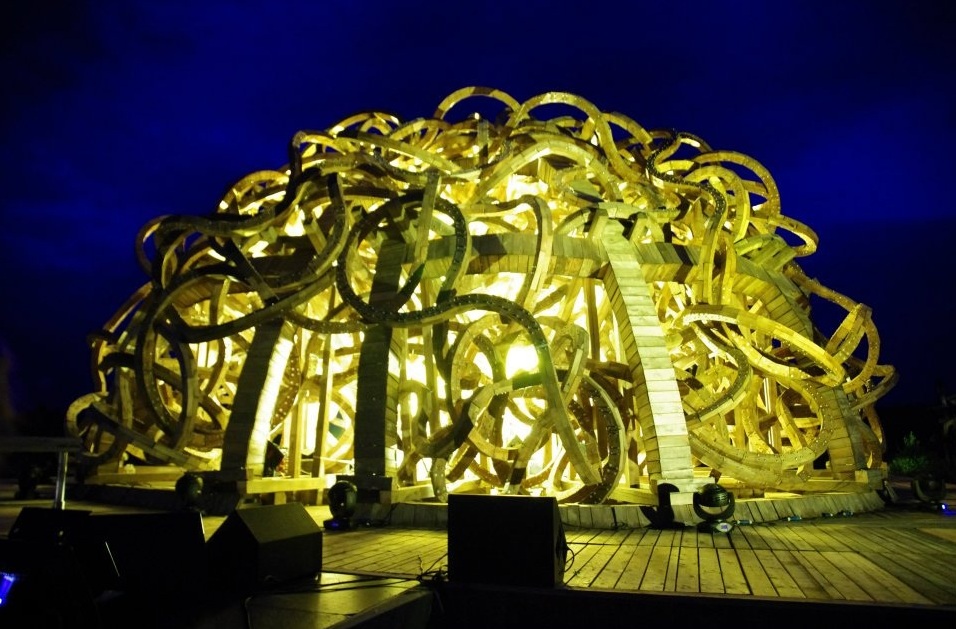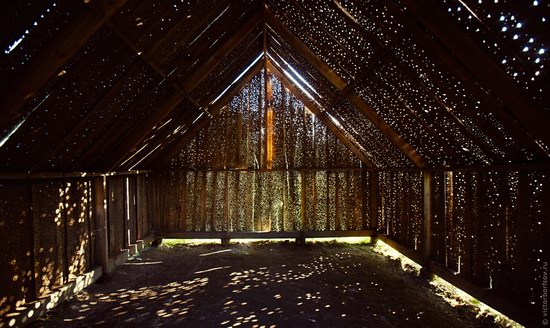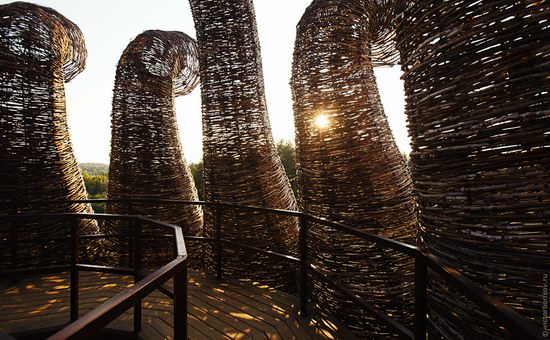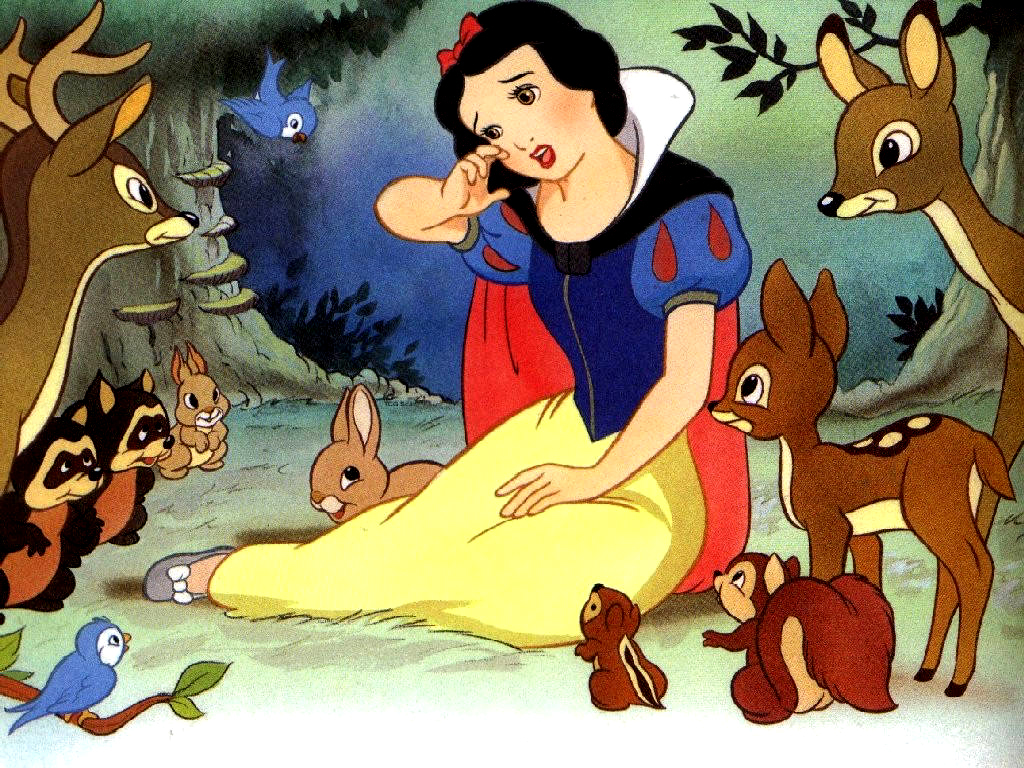Modern. Whimsical. Organic.
Where on earth would you find a place that fit those descriptors?
In the Russian village of Nikola-Lenivets in the national park of Urga, that’s where.
It’s the village where Nikolai Pollisky decided several years ago to create gargantuan landscape art that can be seen and marveled at from great distances, and that he now creates for architectural festivals and installations all around the world. Â Once an abandoned farm collective where persistent vodka use had all but wiped out the villagers, Nikola-Lenivets, has now found rejuvenation through artistic collaboration. Pollisky himself is a white-bearded, t-shirt and suspender-wearing artist who would find himself right at home in a tavern amongst groups of lumberjacks and carpenters. Â He’s a far cry from the tight-suited, salon coiffed metropolitan art types that perpetuate the myth that good art should be inaccessible to some. Â Pollisky on the other hand, believes that “art should be understood without any explanations.” Â He pays his villagers for their contribution, giving them both life and a practical livelihood.
Here are a few of Pollisky’s collaborative creations. Â Some look like alien constructions, while others harken back to a time of nymphs, elves, and ancient tribes. Â Yet, there are others that wouldn’t be out of place at MoMA with their sharp edges and refined lines. Â All the pieces are united by their landscape and the inescapable naturalism that oozes through their materials.




Image Credits: http://bloodandchampagne.com/images/bloodandchampagne5062.jpg, http://russiatrek.org/blog/art/art-park-nikola-lenivets/



